
First and Only Weekly Online Fanzine Devoted to the Life & Works of Edgar Rice Burroughs
Since 1996 ~ Over 10,000 Web Pages in Archive
presents
Volume 2343

 .
. 
Edgar Rice Burroughs |
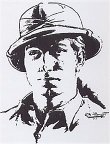 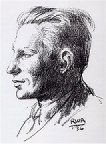
L. Ron Hubbard |
|
California Bound In their formative years neither man settled in one home for long, but eventually both moved to California for extended stays - a locale that seemed to provide the perfect background for their lifestyles and creativity. Both men wrote stories that were ideally suited to action films. The two writers both enjoyed Southern California partially to escape the cold winters of the east but an obvious reason was to take an active role in the film business since their imaginative stories were naturals for the Hollywood film industry. |
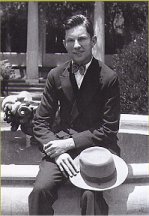
San Diego 1934 |
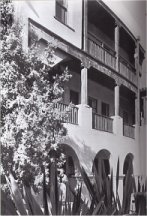
Columbia Writers Complex |
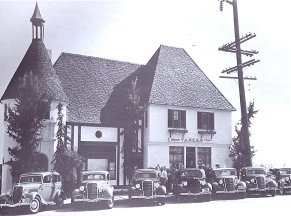
Burroughs Tarzan Enterprises Film Co. |
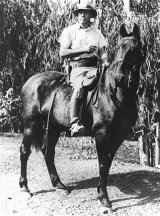
ERB at Tarzana Ranch |
| LRH actually began his professional career as
a fiction writer in California after moving to a beachfront town north
of San Diego in 1933. He approached the craft with a vengeance writing
a story a day -- sometimes producing over 100,000 words a month. His dedication
quickly paid off when he sold two stories for 300 to New York publishers,
establishing his career.
In 1937 Columbia Pictures purchased film rights to novel "Murder at Pirate Castle" and LRH to adapt it to a screenplay for serial under the title "The Secret of Treasure Island." He stayed on to work on film scripts for Columbia, Universal and other major film studios. For a short time, he also worked on the serials "The Adventures of the Mysterious Pilot" and "The Great Adventures of Wild Bill Hickok" as well as on the "Spider" series. In 2000, L. Ron Hubbard's 1981 novel, Battlefield Earth, was filmed as "Battlefield Earth: A Saga of the Year 3000." It was made into a big budget Warner Brothers movie starring John Travolta that opened to very mixed reviews, but showed world-wide success and good video sales. There have been many short film features produced based on his Scientology philosophies. |
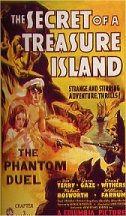 |
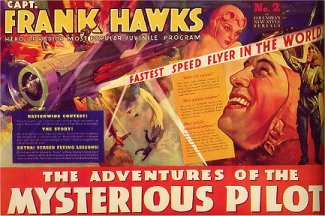 |
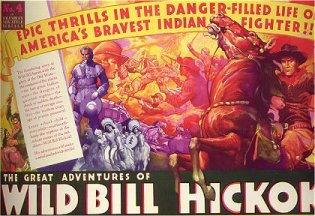 |
| When the Hubbard family first moved to San Diego
and Oakland, it was around the time that the Burroughs family was also
making their move to California. They travelled from Chicago to winter
in San Diego and to explore the feasibility of a permanent move to sunshine
California. In 1919, Ed purchased Mil Flores ($125,000), the 540-acre country
estate of the late General Harrison Gray Otis, founder of the Los Angeles
Times. It is located in the San Fernando Valley in the foothills of the
Santa Monica Mountains. Ed rechristened the estate, Tarzana
Ranch and took on the joys and frustrations associated with the role of
gentleman farmer.
When, in the mid-1920s, ERB realized that Tarzana ranch was driving him deeply into debt, he subdivided some of the property and attempted to convert the land around the main house into the exclusive El Caballero Golf and Country Club. He moved to Los Angeles and Malibu for a time and then moved back into a modest new home just down the hill from the Tarzana mansion on Mecca. Much of his writing was done in the ERB, Inc. office close-by on Ventura Highway. Tarzana was lost to the debt and the economic collapse of 1929. Unable to maintain and refurbish the Tarzana house, ERB had it torn down in the mid-1930s. ERB's Tarzan of the Apes was filmed in 1918 -- one of the first films to gross one million dollars. ERB's company produced a number of pictues including the "New Adventures of Tarzan" in Guatemala. A number of films were shot on location at his Tarzana Ranch, in and around Coonskin Cabin. He took an active role in developing and overseeing film productions - an interest he held until his death in 1950. The ERB filmography is a lengthy one since he was a true film pioneer and adaptations of his work stretch from present day back to 1917. A recent film success was the animated film TARZAN produced by Walt Disney. They followed this up with an animated TV series and stage adaptations that enjoyed amazing success internationally. Currently his first novel, A Princess of Mars is in development by Pixar and Disney Studios. Interestingly, ERB's son, John Coleman Burroughs, and animation great, Bob Clampett, worked on bringing this title to the screen in animation form back in 1936. If they had successfully brought this project to fruitition it would have been the first feature length animated film -- pre-dating Disney's "Snow White." Full coverage of the ERB films is presented at ERBzine Silver Screen. |
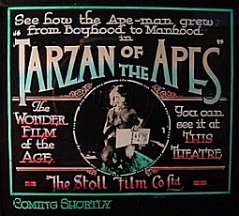
Slide for Tarzan of the Apes 1918 |
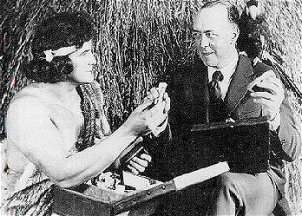
ERB and Elmo Lincoln On Set |
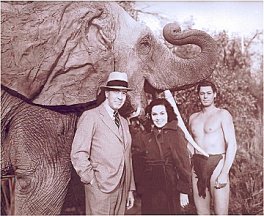
ERB ~ O'Sullivan ~ Weissmuller |
|
HISTORICAL NOVELS Early books by both men included historical novels. LRH's first hardcover novel: Buckskin Brigades, was published by Macaulay Company in 1937. For authenticity he drew upon his youthful experiences with Montana's Blackfeet Indians. |
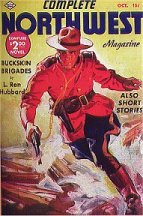
Buckskin Brigade: Pulp Debut |
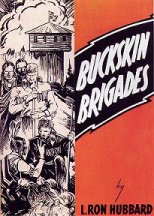
Buckskin Brigade Book Release |
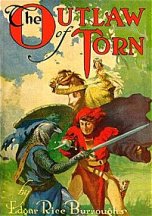
Outlaw of Torn |
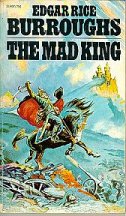
The Mad King |
| ERB's second novel was a story of old England: The Outlaw of Torn followed later by The Mad King. He went on to write many "lost race" novels for which he did considerable research on ancient cultures. During WWII he researched the ancient Roman Empire, which became the theme of one of his last novels: I Am A Barbarian. He wrote a number of Western novels but the most respected were those which gave accurate portrayals of the Apache tribe: War Chief and Apache Devil. His stint with the US Cavalry in Arizona provided the inspiration and much of the authentic background information for these novels. |
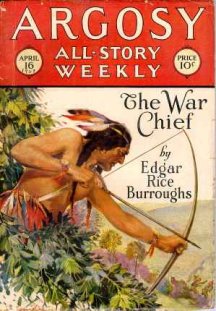
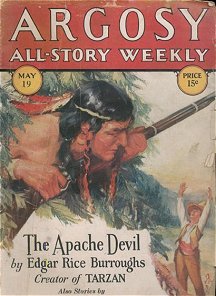
|
WAR YEARS With the outbreak of World War II, both men turned to the military as their patriotic duty. They had both come from military families and had been involved with the military in some way for most of their lives. 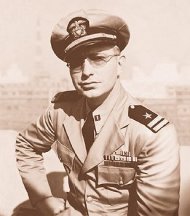 In 1927, LRH
joined the Montana National Guard's 163rd Infantry. In1930 he enlisted
in 20th Marine Corps Reserve, Co. G. where he became sergeant of a prize-winning
drill team. In 1927, LRH
joined the Montana National Guard's 163rd Infantry. In1930 he enlisted
in 20th Marine Corps Reserve, Co. G. where he became sergeant of a prize-winning
drill team.
As a result of his maritime experience, he was commissioned as a lieutenant in the Navy Reserve in 1941. During the war the experienced seaman, assumed command of a convoy escort YP 422 in Boston. Following this he commanded subchaser PC 815 in North Pacific and instructed at the Small Craft Training Center in San Pedro, CA. He also served as navigation officer aboard the USS Algol and later
attended the US Navy School of Military Government at Princeton University.
He was hospitalized at Oak Knoll Naval Hospital in Oakland, CA for war
injuries and it ws there he conducted experiments with the endocrine system.
That led to his early Dianetics discovery that "function monitors structure."
His work helped Americans who survived Japanese POW camps. It demonstrated
to him that elimination of mental trauma led to improved physical recovery
and social adjustment.
|
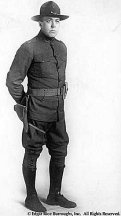
WW I Reserves |
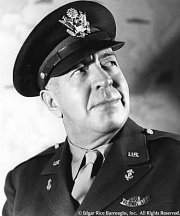
WW II: Correspondent |
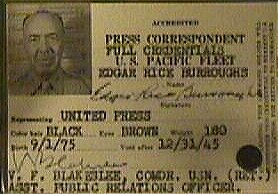
Press Correspondent Card |
| ERB had an uneven school record until he seemed
to have found his niche in the military. After graduating from Michigan
Military Academy in 1893 he returned to the position of Assistant Commandant
- teaching gatling gun, geology, and drill as well as taking on coaching
duties and editing the school paper. He applied unsuccessfully for Teddy
Roosevelt's Roughriders, he was rejected as a soldier of fortune in the
Chinese Army, and failed the entrance exams for West Point. Eventually
he enlisted as a trooper in the US Cavalry and asked to be sent to the
most dangerous post in America -- Arizona where there were still problems
with renegade Apaches. He was too old for active duty in WW I, but served
as a major in command of militia units.
This lifelong love affair with the military -- military academies, US Cavalry, and WWI militia officer -- culminated in his achieving great camraderie with officers in Hawaii during World War II. He lived in Hawaii from 1940-1945. He and son, Hully, witnessed the Japanese attack on Pearl Harbor. After the outbreak of hostilities he helped train a unit of the home guard, wrote patriotic columns and then travelled all around the Pacific on military aircraft and ships during WWII in his role of War Correspondent -- the oldest in the Pacific Theatre. His last Tarzan novel was set in the Pacific and reflected information he had picked up while on these assignments. |
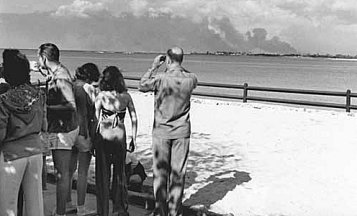
ERB Observing Pearl Harbor Attack |
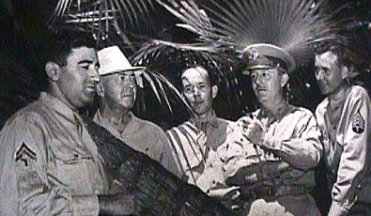
ERB with US Army NCOs and Officers in WWII Hawaii |
|
TRANSFORMATION: NEW DIMENSIONS AND CULTURAL INFLUENCES For LRH, it is clear that following WW II, once he got his bearings, he shifted gears to achieve the work he pursued his entire life. Though his fiction-writing had been a serious, professional adjunct, it was teleologically his "day job" while he pursued his serious work Certainly, we know that that is how he paid for h is research, as well as his living expenses. ERB, as well, found in the transition fulfillment that he seemed to have been seeking for much of his life. Many of us have had similar experience like the cast of Billy Joel's "Piano Man" song. Yet, more poignantly, we can point to the great artists, scientists and leaders who were so motivated following that terrible war, that from those ranks come our world leaders, those who advanced science, and artists. Among them, Elvis Presley, Dr. Seuss and Mr. Rogers and the list goes on. ERB and LRH had both been part of that post-modern canon of popular fiction literary influence that paralleled Hemingway, Steinbeck and Faulkner, which influenced all who followed in their tracks: Lovecraft, Bradbury, Asimov, Brackett . . . and ultimately Orson Scott Card, Anne McCaffrey, Stephen King, and yes, Lucas & Speilberg. Through their fiction works, both ERB and LRH inspired what became our space program -- a force that still drives us into the future. More broadly, they both inspired adventure and exploration. They also broadened with their fantasy works, our awareness of metaphysical realms. Perhaps most important, through that quality of their work that is best understood as moral imagination they created both characters and leit motifs that instilled in cultures the vital moral factor. Thus, as ERB and LRH returned from their wartime duties, the "classic fiction" epoch waned with the "pulps" venue reaching their autumn, their marriages suffered as wartime casualties, and as part of that mis en scene, both men put on new costumes. Both writers "shed" their old skins and emerged with the "directorship" of their own ships, hoisted anchor and set sail to the stars, to achieve their star-high goals with the time still left to them That which did not contribute, was in one way or another jettisoned or left behind them at their post war port 'o call. The world changed around them as destinies were met. LRH and ERB, perforce, helped change the world with their unique artistic expressions. |
| As result of the depression of the "dirty '30s,",
ERB's magazine serial sales had dried up and book royalties had plummeted.
Son Hulbert crashed ERB's new aircraft, a Security Airster plane, "the
Doodad," and although he escaped serious injury the new plane was almost
totally destroyed. The company he had invested in to manufacture Apache
Devil aircraft engines foundered, as did numerous other business investments
including his Arizona goldmine venture and his troubled film company that
was trying to finish a much-over-budget Tarzan film in Guatemala. His beloved
Tarzana Ranch was now a thing of the past as he realized he could not afford
the upkeep -- this resulted in his having the main house demolished. Unable
to deal with wife Emma's increasing problems with alcohol, ERB left the
household and filed for divorce. The significance of this move and the
resulting backlash from his children and longtime friends was very troublesome.
At this point ERB made some bold moves to turn his life around. He divorced Emma, the mother of his three children, and married a younger blonde Hollywood starlet, Florence Gilbert. For a time they made the rounds in Hollywood circles and ERB turned more to film and radio royalties for income. When the money ran out he cut expenses by taking Florence and her two young children to live in a beach house in Hawaii. The marriage broke up a few months before the Japanese attack on Pearl Harbor. His subsequent involvement in the war effort in the Pacific Theatre brought about a change of direction in his life and provided fulfillment that he seemed to have been seeking for much of his life. |
|
Media Masters The works of both men were adapted to other media. Since LRH wrote in so many different styles and genres he was published in a wide variety of publications. Some of his stories were adapted to films and film serials. He wrote words and music for radio broadcasts and recordings. After writing the epic SF novel, Battlefield Earth, he composed a soundtrack to go with the novel. . . a soundtrack that was used long after his death when the book was adapted to a high budget film in 2001. This was followed by a soundtrack for his final fiction work, Mission Earth. Today his works are still being presented in a wide variety of formats. . . most notably through the innovative marketing of Galaxy Press.
ERB was a master of media. He was on the cutting edge of 20th century technology and marketing: magazine and newspaper serials, feature films, film serials, newspaper adventure strips, syndicated radio serials on ET discs, premiums, merchandising, commercials, toys. Half a century after his death his characters are featured on the technologies of the 21st century: Satellite Television, cable, Internet, computer generated animated films, computer/video games, etc. |
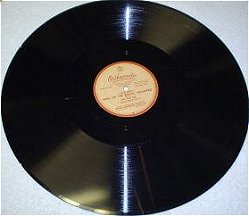
16" ET Radio Transcription Disc |
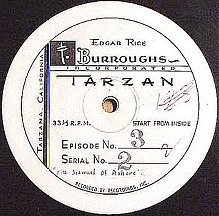
Tarzan Radio Show 16" ET |
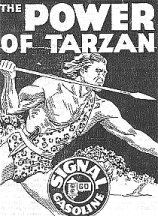
Gasoline Sponsor |
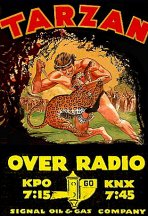
Tarzan Radio Ad |
|
WRITING SCHEDULES: Write . . . Write . . . Write Throughout their writing careers both authors were hailed for their prodigious output. They made a commitment to write each day. Both authors followed a strict regimen of writing each morning. Although they preferred to write in their comfortable studies, well-stocked with reference material, their lifestyles often often dictated that they write in cabins, campsites, beach houses, ships, trains, and aircraft. The work and lifestyles of both men were always newsworthy and they were subjects of countless newsstories throughout their long careers. The works of both Hubbard and ERB have sold in the millions and are still in print and popular into the 21st Century. They each published hundreds of titles. A major difference was that ERB made a point of serializing many of his stories which he would eventually collate into book form. In an effort to achieve maximum sales, both men presented stories under pennames -- although LRH did much more of this than did ERB. LRH wrote under 15 pen names. The two authors streamlined their writing methods to achieve maximum output resulting in almost all their prolific writing output being published. Both have met accusations of racism, but such
accusations are worthy of careful, balanced examination. The majority of
their work was far more tolerant toward minorities than the majority of
writers of their time. They both showed admirable tolerance and support
of other cultures and races, especially in light of the fact that they
were raised in a time when whites were taught that they were better than
the Chinese, the Italians, the Irish, and the other immigrants who were
ostensibly competing for American jobs. Above all both men wove stories
that captivated and inspired millions of diverse cultures and races for
generations to come.
In 1950, as a result of his years of research on the human mind, LRH wrote the "self-help" book, Dianetics, The Modern Science of Mental Health. In 1982, he returned to fiction writing with Battlefield Earth, the biggest single science fiction novel ever published -- 428,750 words across over 1,000 pages. To accompany the book, he composed words and music for a Battlefield Earth "soundtrack," which was performed by Chick Corea, Gayle Moran, and Nicky Hopkins. This was followed by his magnum opus, Mission Earth, a
monumental 10-volume, 1.2-million-word science fiction satire that he wrote
in eight months in 1981. The first volume of this work was released to
great fan and critical success in 1985, shortly before his death on January
24, 1986. He also wrote a soundtrack for this work and directed the recording
of it by Edgar Winter.
|
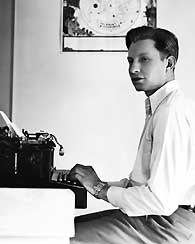
LRH Early Years |
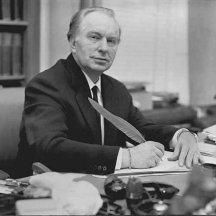
LRH at Saint Hill |
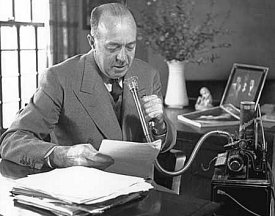
Dictating a Novel into the Ediphone |
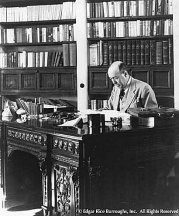
Answering correspondence |
| ERB followed a schedule of writing each morning
following a morning horseback ride across his Tarzana Ranch. He kept numerous
journals of his Tarzana years, his auto adventures and WWII assignments.
Ed, a natural storyteller, wrote quickly. His first stories were written
longhand, after which he graduated to a typewriter. Later much of his work
was dictated but he seldom did much in way of revision, often leaving this
task to Emma or his editors.
Normal Bean was the first, but not the only, pen name that Edgar Rice Burroughs used. Years after he had established himself as a successful author, he tried on several occasions to submit new stories to magazine editors under assumed names. John Tyler McCulloch was the chief of these pseudonyms, and ERB would accompany this nom de plume with the home address of his secretary, Ralph Rothmund, so as to completely divert attention from Tarzana. Two other Burroughs pseudonyms that appeared on unpublished manuscripts in the ERB Inc. safe were John Mann and Peavy Peabody. Burroughs subscribed to a clipping service and dutifully pasted his newsstories from all over the world into scrapbooks. These collections are part of the Burroughs archive actively maintained by grandson Danton Burroughs in the ERB, Inc. offices in Tarzana, CA. Sadly, Danton died in May of 2008. ERB was the subject of countless interviews and newspapers throughout his career. It was very evident from the start that his fictional characters hit a nerve with his reading public - especially the young readers. From the Los Angeles Times of November 22, 1929: "Edgar Rice Burroughs is convinced that his Tarzan stories are good for children because his own children grew up on them and he thinks they are the best of children. 'We tried to keep the books from them at first,' he said, 'but couldn't. They almost know them by heart. And the only bad effect we've ever noticed is that for awhile one of the boys wanted to eat with his hands, because Tarzan did that when a boy.' |
| While ERB and LRH both often reflected in their fiction, the real life
situation of minorities, and women, or commented upon it in their personal
writings, they both, portrayed individuals who had their own capacities
for good or evil, courage or temerity -- and in their personal actions
ERB and LRH showed a liberated view of humanity's diverse cultures and
races. By way of example, after the Civil War the
Burroughs family took in a wounded negro Confederate soldier, James M.
Johnson. During his recuperation, "Uncle Jim" was made practically one
of the family. He lived with the family, who eventually helped him acquire
a chain of shoe stores and become a successful businessman. ERB chose an
even mix of minorities and types as villains in his novels, which he balanced
by presenting a corresponding mix of minorities as "good guys."
LRH's views are best shown from his early age association with the Black foot Indians, his immersion among the Chamorro and Asian people, the storyh of his friendship with a Sikh at George Washington University, his courageous efforts to uplift Blacks in America, Rhodesia, South Africa and indeed the fact that he studied twenty-one cultures in his research path -- as well as women and children -- in order to assure that all people had equal access to what he thought would "improve their condition." ERB kept up voluminous correspondence with fans, friends, relatives and business associates. Most of this correspondence has been preserved in university and private archives. ERB was a dreamer -- and a remarkable storyteller -- rather than a deep thinker. But he was more than this. He was an innovative business man who actually built the prototype of a multimedia empire. "I can remember
as a child reading with breathless fascination the Mars novels of Edgar
Rice Burroughs....
~ Carl Sagan
|
NAVIGATION GUIDE TO THE LRH / ERB CONNECTION
|
|
|
|
|
|
|
|
![]()

![]()
BILL
HILLMAN
Visit
our thousands of other sites at:
BILL
and SUE-ON HILLMAN ECLECTIC STUDIO
ERB
Text, ERB Images and Tarzan® are ©Edgar Rice Burroughs, Inc.-
All Rights Reserved.
LRH
IMAGES © 1998 L. RON HUBBARD LIBRARY. ALL RIGHTS RESERVED.
All
Original Work ©1996-2009/2012 by Bill Hillman and/or Contributing
Authors/Owners
No
part of this web site may be reproduced without permission from the respective
owners.